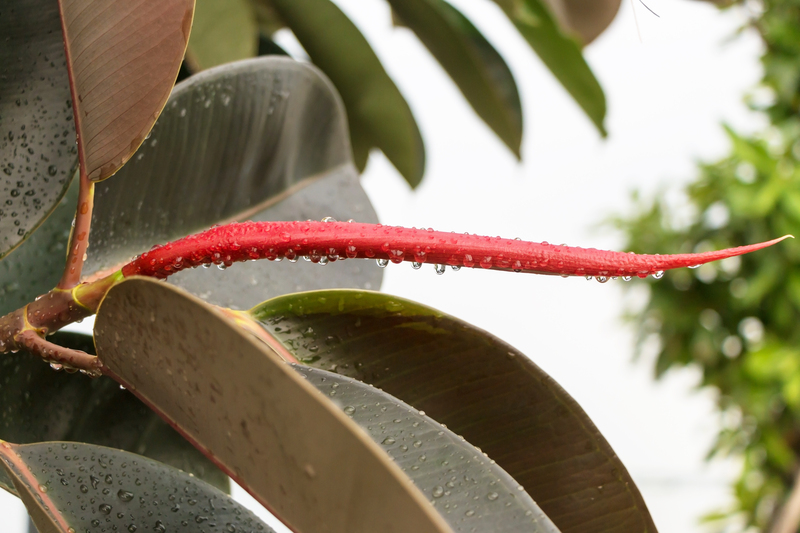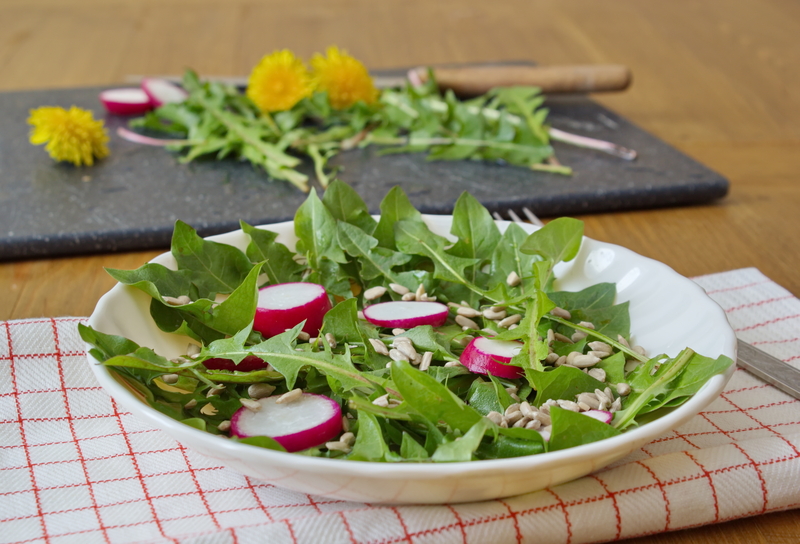Simple Steps to a Thriving Child-Friendly Garden
Posted on 03/09/2025
Simple Steps to a Thriving Child-Friendly Garden
A child-friendly garden is more than just a backyard--it's a natural playground, a science lab, a sensory haven, and an inspirational space where little ones can connect with nature. Whether you live in urban, suburban, or rural settings, designing a thriving garden for kids is achievable with a few thoughtful steps. In this comprehensive guide, you'll discover easy steps to create a child-friendly garden, learn which plants are best for kids, and ensure your green space is both safe and exciting.

Why Create a Garden That's Friendly for Children?
Gardening with children offers a multitude of benefits. Not only does it encourage outdoor physical activity, but it also nurtures curiosity, responsibility, and a lifelong appreciation for nature. In a properly designed child-friendly garden, children of all ages can:
- Explore the natural world through hands-on experience
- Develop motor skills and coordination
- Learn about plant life cycles, insects, and sustainability
- Engage in safe, creative play
- Cultivate healthy eating habits by growing their own fruits and vegetables
1. Assessing Your Space: The First Step in Creating a Child-Friendly Garden
Before you break ground, take time to evaluate your available space. Even small yards, patios, or balconies can be transformed into a safe and engaging garden for kids. Consider the following:
- Sunlight: Track how much sunlight your space receives at different times of the day.
- Soil Quality: Test your soil or consider raised beds with quality compost.
- Water Access: Ensure an accessible water source for easy watering (and spontaneous water play!).
- Safety Hazards: Remove or fence off ponds, toxic plants, sharp tools, and other potential dangers.
- Available Space: Decide where to place play areas, beds, and paths without crowding the garden.
Pro Tip:
When planning your garden for children, involve your kids in measuring and mapping out the space. This fosters ownership and excitement right from the start!
2. Choose Safe, Easy-to-Grow Plants
A thriving child-safe garden starts with selecting the right plants. Aim for varieties that are easy to grow, non-toxic, robust, and visually appealing. Here are top picks:
- Sunflowers: Tall, bright, and fast-growing--great for teaching about life cycles.
- Snapdragons & Nasturtiums: Edible flowers that are fun to touch and taste.
- Strawberries & Cherry Tomatoes: Sweet, rewarding crops for kids to pluck and eat.
- Carrots & Radishes: Quick-growing root crops children will love harvesting.
- Herbs: Mint and basil are especially hardy and fragrant.
- Lavender: Visually appealing and aromatic--plus, it attracts butterflies!
- Pumpkins or Gourds: Exciting for kids to watch as they swell and change shape.
To ensure a child-safe space, avoid plants such as foxglove, oleander, daffodils, yew berries, or anything labeled as toxic or irritating.
Involve Children in Plant Choices
Ask your kids which colors, smells, or tastes excite them most. Empowering children to pick seeds or seedlings increases their ownership and interest in the garden's progress.
3. Design Interactive, Accessible Garden Zones
Every successful thriving child-friendly garden benefits from clearly defined and accessible zones. When plotting your space, think in terms of different purposes and experiences:
- Grow Zone: Raised beds or border plots for vegetables, fruits, and flowers.
- Play Area: Grass for running, or perhaps a sandpit or mud kitchen for creative play.
- Sensory Path: Pebbles, logs, and stepping stones to walk barefoot or play balancing games.
- Quiet Nook: A shady bench, hammock, or tent for reading and relaxing.
- Wildlife Corner: Bug hotels, bird feeders, and native plants to attract insects and birds.
Ensure Accessibility for All Ages
Paths should be wide enough for strollers and trikes and free from tripping hazards. Raised beds are excellent for giving toddlers and young children easy access for sowing, watering, and harvesting.
4. Prioritize Garden Safety Throughout
A safe children's garden is the foundation of happy, confident play. Review and address these safety musts:
- Check Fencing: Secure perimeters to keep children contained and prevent wildlife intrusion.
- Review Plant Choices: Double-check that all plants are non-toxic and unlikely to cause allergic reactions.
- Tool Management: Store sharp tools, shears, or lawn mowers out of reach.
- Shade and Sun Protection: Ensure shaded areas for mid-day play, and keep sunscreen handy.
- Water Safety: Secure water features or install mesh/tops to prevent accidents.
Educate children about garden rules and introduce basic safety gear, such as gloves and hats.
5. Encourage Exploration and Play
Integrating play into your child-friendly garden design will make the space irresistible. Some ideas to inspire adventure and creativity include:
- Secret Hideaways: Willow tunnels, teepees made of bamboo, or castles of sunflowers.
- Natural Obstacle Course: Balancing logs, stumps for jumping, tunnels made from climbing plants.
- Sandbox or Mud Kitchen: Easy DIY structures for hours of creative sensory play.
- Outdoor Art Station: Chalkboard mounted on a fence, stones for painting, or crafts with leaves and branches.
- Water Play Features: Kid-sized watering cans, a splash pad, or a shallow basin for floating boats.
6. Make Gardening Fun and Educational
A child-appropriate garden can be a living laboratory for science, math, and art. Get the most from your outdoor classroom by introducing:
- Mini-Greenhouses: Use plastic bottles or small frames for experiments and early seeds.
- Growth Charts: Have your child measure plant growth and keep drawings or journal entries.
- Composting: Teach about sustainability by composting food scraps and yard waste in a visible bin.
- Wildlife Spotting: Keep a garden diary for birds, bugs, butterflies, and frogs.
- Culinary Exploration: Try new recipes with freshly picked herbs and veggies.
Boost Learning and Fun
Garden games--like scavenger hunts, counting flowers, or identifying scents--turn learning into play and strengthen children's connection with the outdoors.
7. Maintain and Adapt the Garden Together
Children love regular routines and seeing the result of their efforts. For a successful child-friendly garden:
- Set Up Kid Tasks: Assign age-appropriate chores such as watering, harvesting, or picking up leaves.
- Celebrate Achievements: Praise children's progress and celebrate milestones--like the first ripe strawberry!
- Watch and Adapt: Update areas as kids grow, introduce new plants, and rotate activities to keep things fresh.
Encourage kids to share their garden with friends or family, teaching stewardship and pride in their living creation.
Top Tips for a Thriving, Child-Friendly Garden
- Build Gradually: Start with a few easy plants and zones, expanding as confidence grows.
- Go Organic: Avoid chemical pesticides and fertilizers--choose natural remedies for pests and soil enrichment.
- Invite All Senses: Select a mix of colorful, fragrant, and textured plants for richer experiences.
- Expect Mess and Imperfection: Gardens are living spaces--embrace mud, weeds, and bugs as part of the fun!
- Keep It Child-Led: Let your kids' interests, questions, and creativity drive the evolution of your family garden.
Frequently Asked Questions About Child-Friendly Gardens
- How do I protect my child from bugs and allergies? -- Plant bug-repellent herbs like lavender and mint; keep antihistamine and bug spray handy. Observe for specific plant or pollen allergies.
- What's the best age to introduce children to gardening? -- Any age! Even toddlers enjoy digging, while older kids can take on project planning and DIY elements.
- How can I make a small space garden child-friendly? -- Use vertical planters, hanging baskets, window boxes, and container gardens. Focus on interactive zones like a miniature sandpit or a butterfly-attracting flower pot.
- Are raised beds a good idea? -- Absolutely. Raised beds improve accessibility, help control soil quality, and define safe working zones for small hands.

The Lasting Benefits of a Thriving Child-Friendly Garden
Beyond the fun and play, a thriving garden for children provides lifelong skills and memories. Gardening with your kids encourages healthy lifestyles, fosters environmental stewardship, and lays a foundation for confidence and well-being.
Getting started doesn't require an expert's touch--just a little planning, collaboration, and the willingness to get your hands dirty together. Nurture your child's curiosity and wonder, and watch your garden (and your child) flourish!
Conclusion: Make Your Garden a Family Adventure
Designing a child-friendly garden that thrives isn't only about planting seeds--it's about sowing inspiration, care, and creativity. By following these simple steps to a child-friendly garden, you're setting the stage for years of outdoor joy and discovery.
*So gather your gloves, pick out your seeds, and start building an outdoor sanctuary where your family--especially the youngest members--can grow together!*
```
